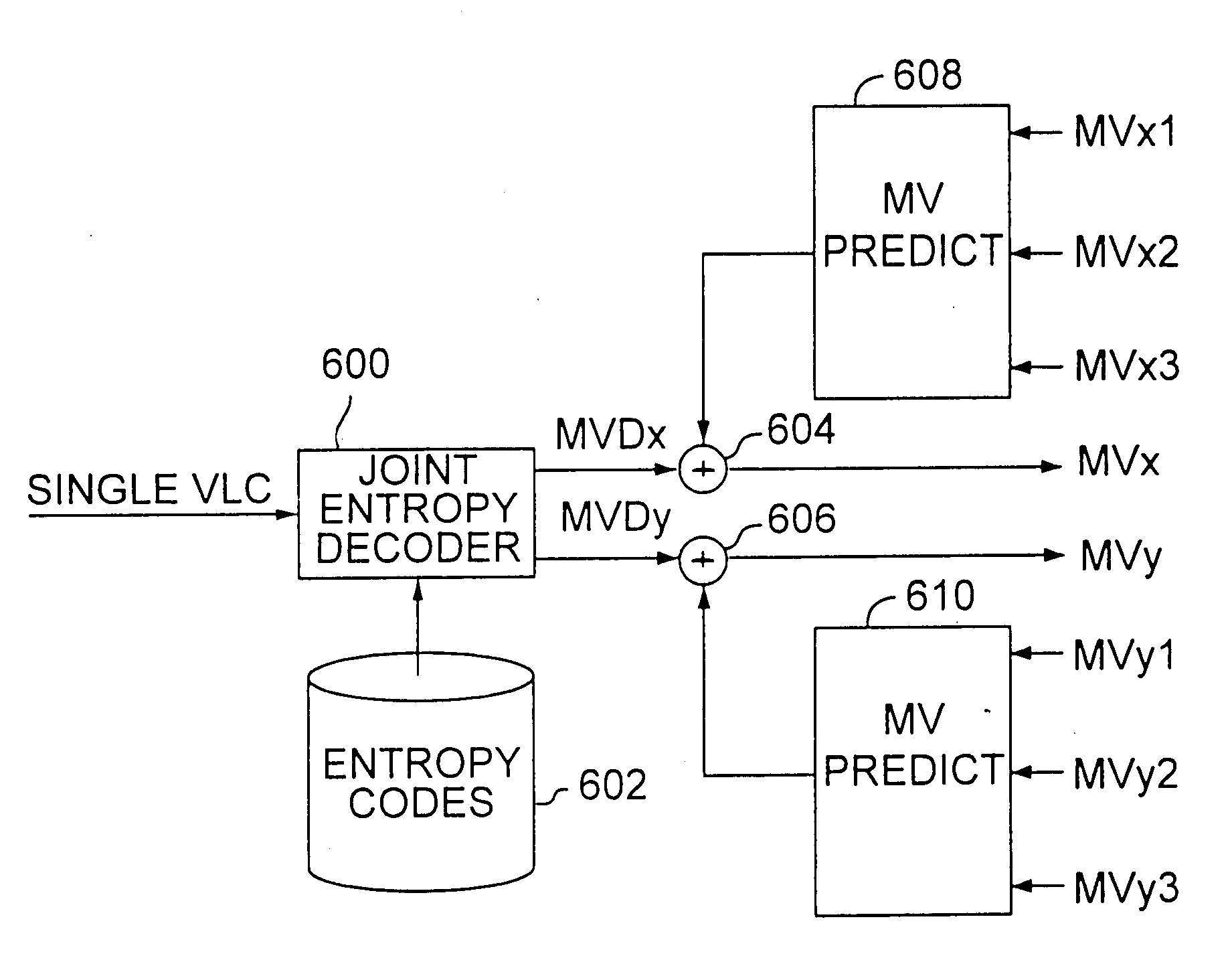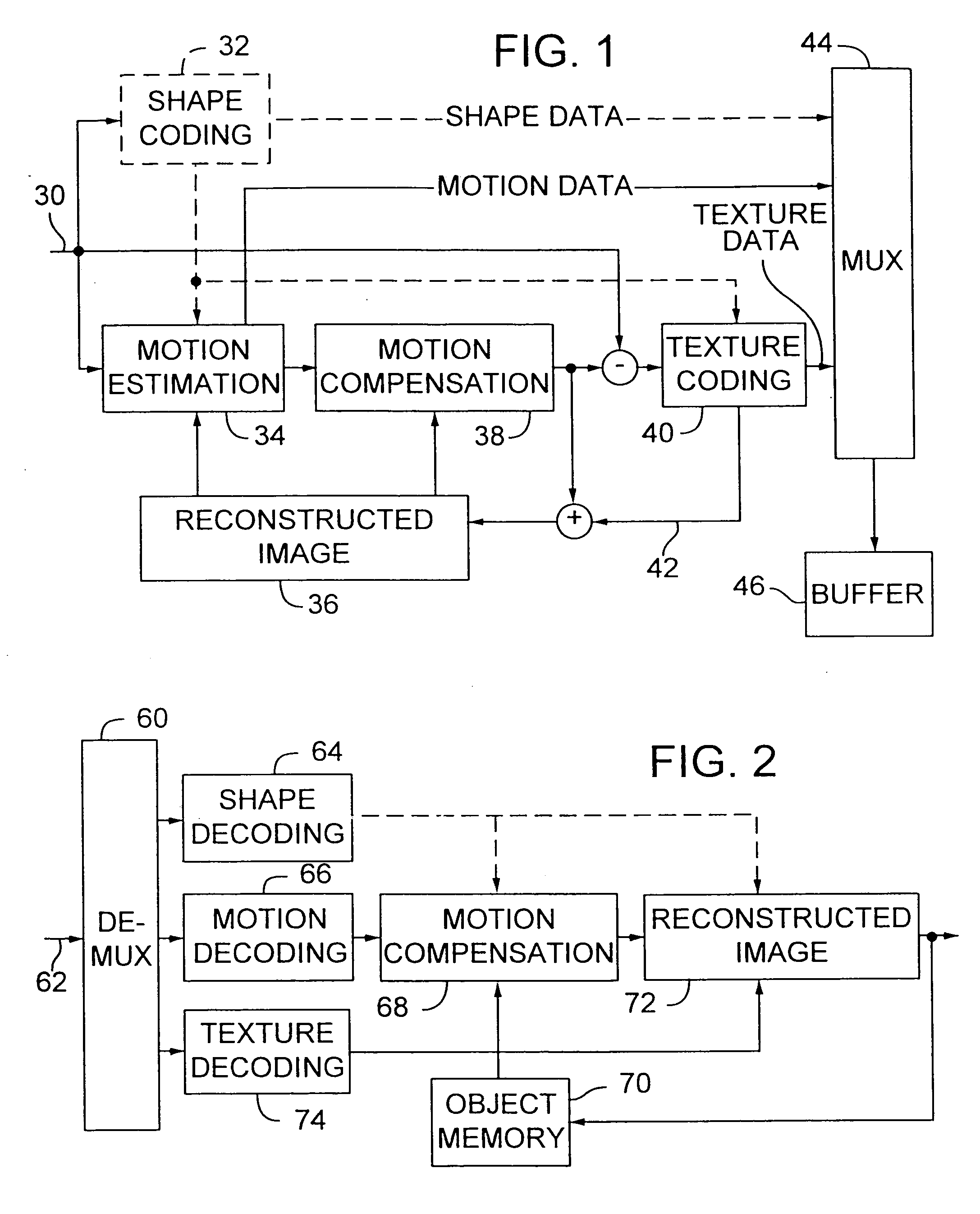Efficient motion vector coding for video compression
- Summary
- Abstract
- Description
- Claims
- Application Information
AI Technical Summary
Benefits of technology
Problems solved by technology
Method used
Image
Examples
Embodiment Construction
Introduction
The first section below provides a description of a video encoder and decoder. Subsequent sections describe how to improve coding of motion vectors by exploiting the correlation between the X and Y components of the vectors.
This approach for jointly coding the X and Y components of a motion vector applies to both frame-based and object-based video coding. Both forms of video coding employ motion vectors to define the motion of a pixel or block of pixels from one frame to another. Typically, a motion vector is computed for regular sized blocks of pixels. In frame-based coding, the frame is divided into regular sized blocks. In object-based coding, each video object plane is divided into blocks. Since the object represented in a video object plane usually has a non-rectangular shape, object-based coders use the shape to determine which pixels in each block fall within the boundaries of the object. While frame-based and object-based coding differ in this respect, both ...
PUM
 Login to View More
Login to View More Abstract
Description
Claims
Application Information
 Login to View More
Login to View More - R&D
- Intellectual Property
- Life Sciences
- Materials
- Tech Scout
- Unparalleled Data Quality
- Higher Quality Content
- 60% Fewer Hallucinations
Browse by: Latest US Patents, China's latest patents, Technical Efficacy Thesaurus, Application Domain, Technology Topic, Popular Technical Reports.
© 2025 PatSnap. All rights reserved.Legal|Privacy policy|Modern Slavery Act Transparency Statement|Sitemap|About US| Contact US: help@patsnap.com



